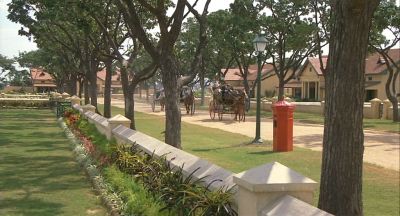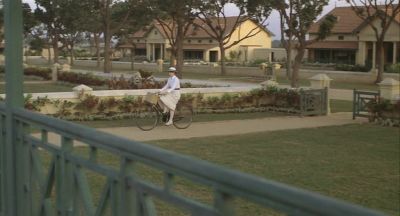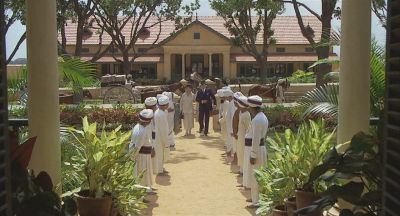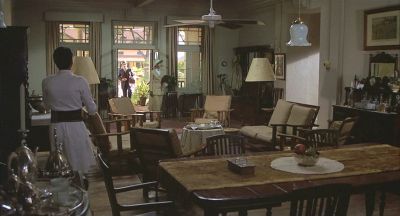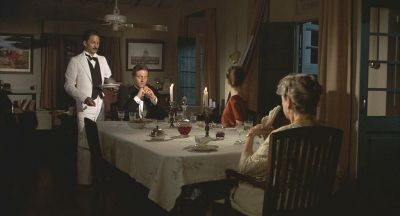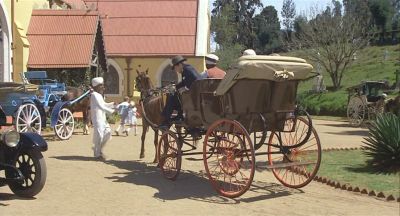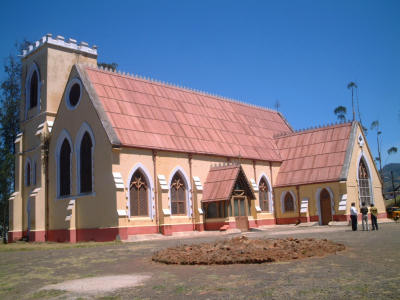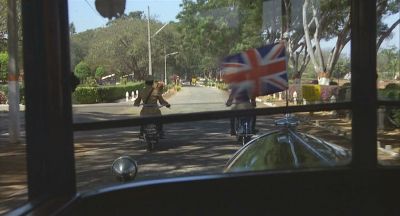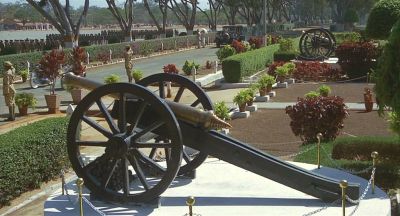The Chandrapore Civil Lines in 'A Passage To India'
It comes, perhaps, as a shock to some viewers of 'A Passage To India' when they see the contrast between the crowded bazaar and the neat and orderly bungalows of the Civil lines, where Ronny Heaslop and the others of the British community live. Lean intended this, but did not invent it. Most British communities in India were situated outside the old walled town where the natives lived. The community was generally divided into two parts, the Civil Lines and the Military Cantonment, often abbreviated to 'The Cant'. The former was spaciously arranged with lots of green between the bungalows inhabited by the sahibs, whilst the latter was organized on more practical military lines. Examples of all these divisions can still be seen today throughout India, with the difference that it is now the Indian middle classes, not the British, who live in what were the Civil Lines.
These bungalows look too good to be genuine; I suspect that they were constructed specially for the film. David Lean did not shy away from such a grand undertaking: in his masterpiece 'Ryan's Daughter', an entire stone village was built for the film near Carhoo on the Dingle Penninsula, Ireland, and later demolished.
This still shows Mrs Moore and Ronny Heaslop walking to his house, with his servants lined up in greeting. That a bachelor would need so many servants may come as a surprise to many in these modern days of high wages, but in the period of the 1920s and 30s, this was quite normal.
The Church
In the film-still above, we see Ronny, Mrs Moore, and Adela being driven to the Sunday service at the Chandrapore Church. Adela and Ronny have settled their differences, and their engagement is back on again. A bearer moves forward to take the reins as Ronny's carriage draws up in front of the church.
The church used in the film is St Thomas' Church, in the hill-station of Ootacamund, now renamed to Udhagamandalam. This fine photo is by John Sinclair Willis, of Hebden Bridge, England. Ootacamund or 'Ooty', also known as 'Snooty Ooty' or the 'Queen of Hill Stations' is set in stunning scenery of the Nilgiri Hills, some 130 miles south-west of Bangalore. Situated 2200 metres above sea-level, it was developed as a British summer retreat with cottages, clubs, and a Government House. Today, it is a popular tourist destination.
The Cant
We are shown a very brief view of the Military Cantonment in the film, when Adela drives with the Turtons in their official car to the Court, for the trial.
Where was this filmed? Perhaps one of the military camps in or around Bangalore? It is very typical of many such military areas all over India, and its like can still be seen today. Although most camps are very security-concious, and do not allow photography, they often have public roads running through them, and can thus be inspected by the curious. I would especially recommend a visit to the north Indian city of Kanpur, once known as Cawnpore.

